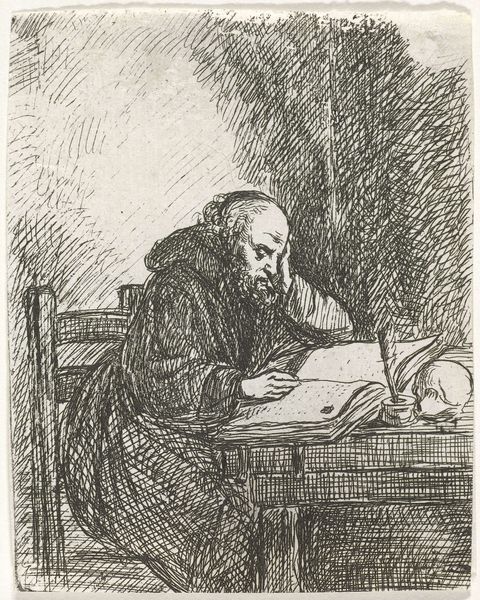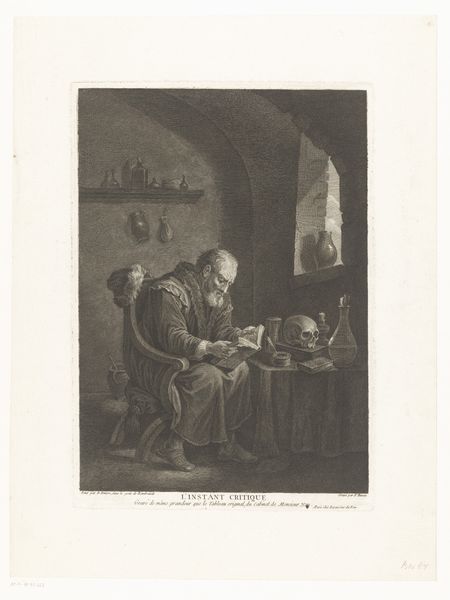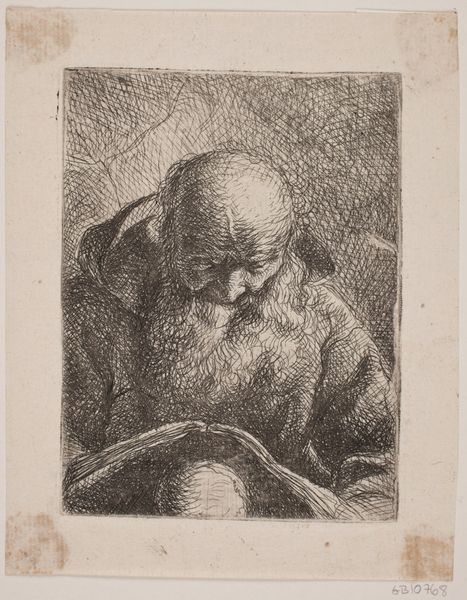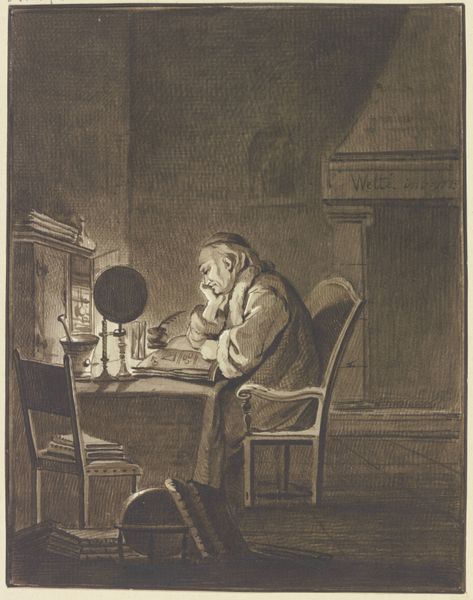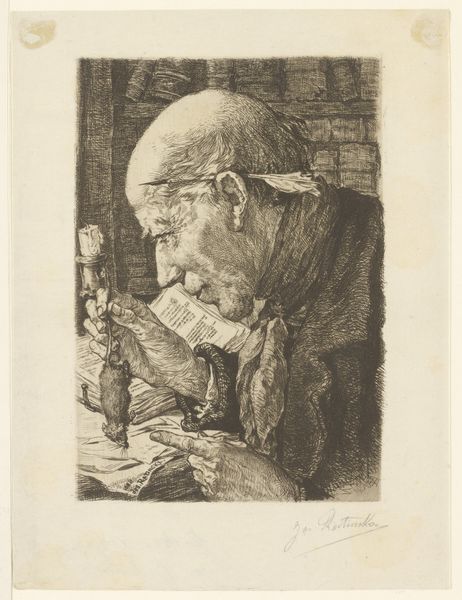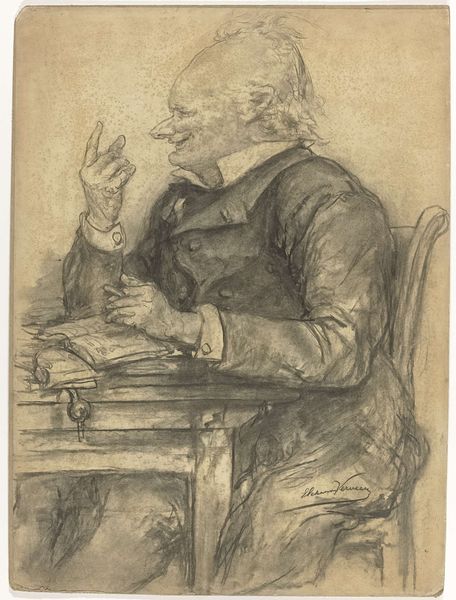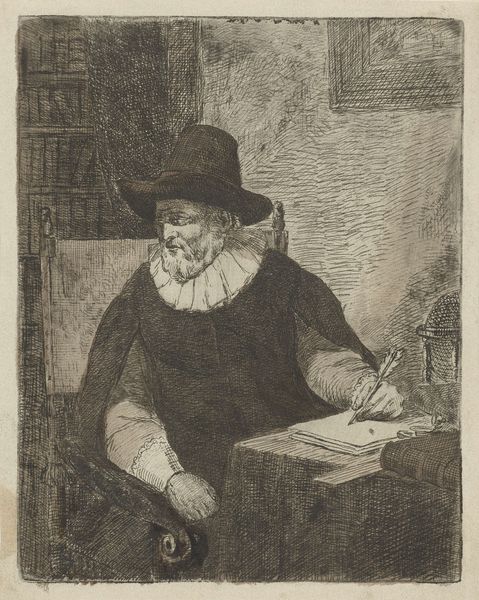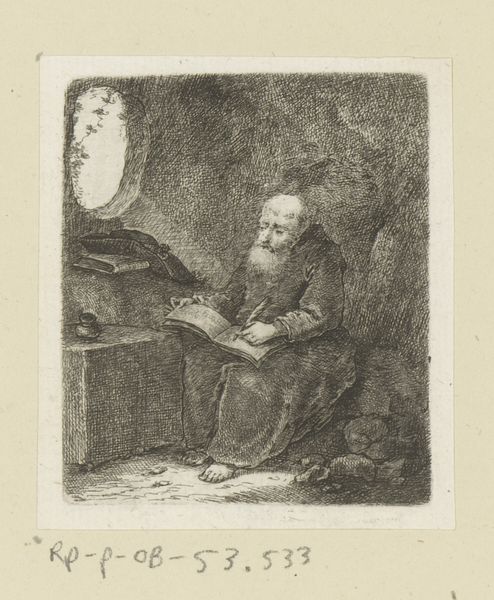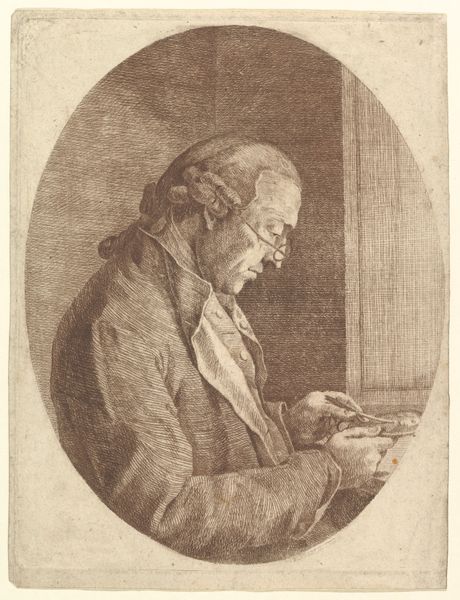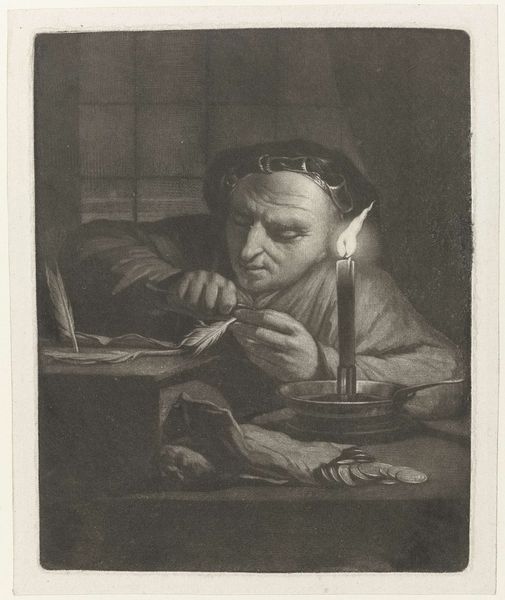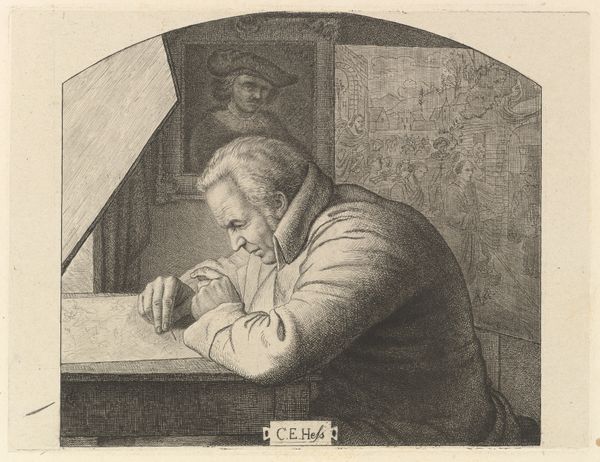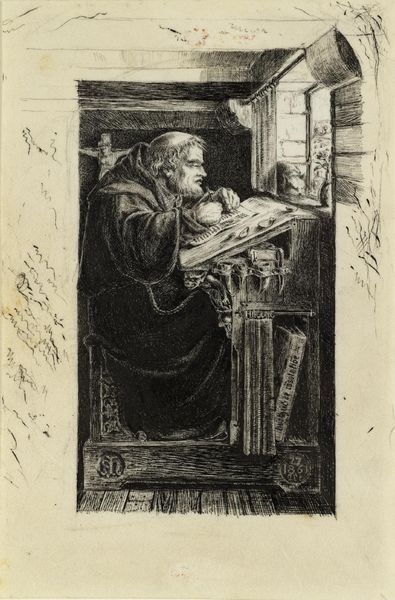
Dimensions: height 89 mm, width 70 mm
Copyright: Rijks Museum: Open Domain
David van der Kellen created this etching of a reading monk in the Netherlands sometime in the mid-19th century. The image invites us to consider the place of religious study within Dutch society. The monk, identifiable by his tonsure and habit, sits absorbed in a large book, a skull and quill on the desk beside him. The skull is a memento mori, a reminder of death's inevitability, and the fleeting nature of earthly life. It’s a common trope in art history, particularly during the 16th and 17th centuries, though its revival here suggests a continued fascination with mortality, or perhaps a revival of older artistic traditions. Consider the social and political position of the Catholic church in the 19th-century Netherlands. The Dutch constitution of 1848 granted religious freedom, ending centuries of discrimination against Catholics. This etching may reflect a renewed interest in Catholicism, and in the contemplative life, within Dutch society. By consulting historical archives, religious studies, and art historical literature, we can better understand the complex interplay of religion, politics, and artistic expression in the Netherlands.
Comments
No comments
Be the first to comment and join the conversation on the ultimate creative platform.
